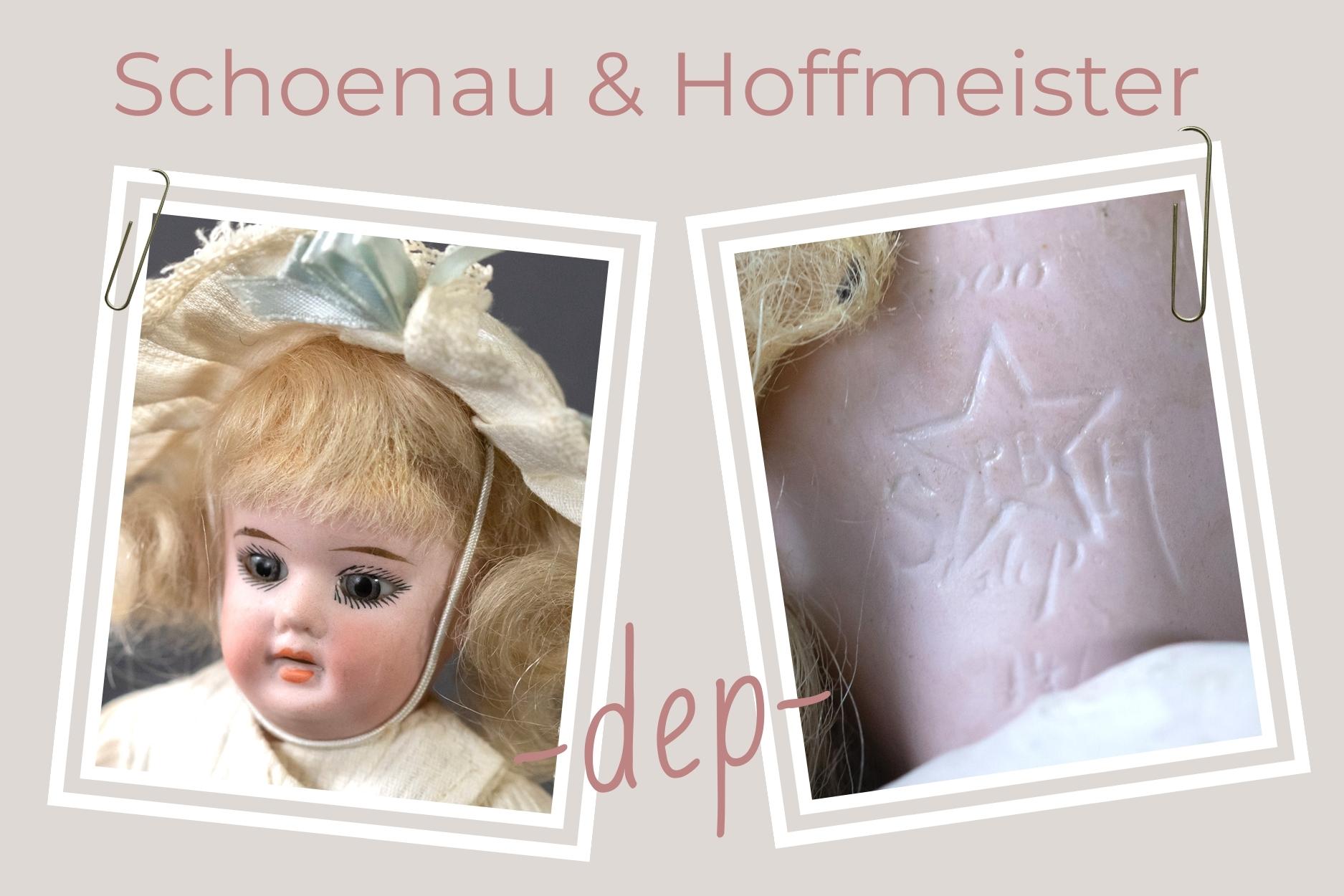Beginnings in 1901
In 1901 a German newspaper for the ceramic industry announces the porcelain factory in Burggrub of Schoenau & Hoffmeister. It listed the partnering owners as the merchants Arthur Schoenau and Carl Hoffmeister.
Both men previously owned porcelain factories in Sonneberg. Both men have listings in 1900 in the German empire’s official exhibition catalogue for the International Exposition in Paris.
Arthur Schoenau began his work by buying the Bauersachs & Henninger firm in 1884 and renaming it “Arthur Schoenau.” Under that name he exhibited at the Leipzig fair in 1896.
1904 Schoenau & Hoffmeister Exhibit Dolls in St. Louis
Both Schoenau and Hoffmeister exhibited dolls at the Universal Exposition in St. Louis in 1904 with several other toy makers from Sonneberg, Germany (Louisiana Purchase Exposition. Official Catalogue of Exhibitors. St. Louis, For the Committee on press and publicity, by the Official catalogue company in, 1904. p. 91).
1906 Trademark
In 1906 they listed their trademark with the five pointed star between the initials S and H in the German Ceramic Industry address book, “Adressbuch Der Keramischen Industrie,” viewable on page 152. In the trademark image they explain that when the pattern is “deposited” or registered the letters -dep- are added underneath. (This may have meant when it is registered for export.)
One can see the trademark also in the 1913 issue of The Pottery, Glass and Brass Salesman publication.
In this listing they advertise that they had a representative in Paris at the address of Rue des Petites Ecuries 50 named Schreiber & Aronson. They list their goods as doll heads, crockery, vases, glazed and non-glazed, ashtrays, figurines, knick-knacks, and a specialization in bisque doll heads. Their factory employed 130 workers at that time.
The Schoenau & Hoffmeister star trademark appears in the 1913 issue of the Pottery & Glass Salesman book.

1907 Ownership Changes
Carl Hoffmeister did not stay with the business but left in 1907. At this time Karl Daum and Magnus Leube worked as deputy directors.
Arthur Schoenau and Magnus Leube to co-own the business in 1909.
1911-12 Arthur Schoenau Dies
Arthur Schoenau died in 1911 or 1912. The company continued under his widow Karoline Schoenau, with Kurt Schoenau and Hans Schoenau. At that time Hans Schoenau and Magnus Leube represented the company. Cieslik’s German Doll Encyclopedia says he died in 1911 but there are announcements of his death in 1912 in newspapers and Germany publications.
Arthur Schoenau’s two sons take over the business by dividing it. Curt Schoenau managed the doll factory while Hans Schoenau managed the porcelain factory.
1914 Hans Schoenau Dies
Sprechsaal reported in 1914 that Hans Schoenau died as a victim in the war as a reserve lieutenant in the royal Wurttemberg infantry regiment no. 125. The report mentions that he was co-owner of the Schoenau & Hoffmeister porcelain factory in Burggrub. The co-owner was Magnus Leube who had joined with Arthur Schoenau back in 1909.
1916 Schoenau & Hoffmeister New Ownership
After Hans Schoenau dies, Magnus Leube of Burggrub and Kurt Schoenau of Sonneberg entitled, each independently along with Han’s widow Karoline Schoenau continued the company. (The Ceramic Review, 1916). (Kurt Schoenau’s name is spelled “Curt” by some resources. I have used the K spelling as it is found in the source linked.)
1930
Other Schoenau & Hoffmeister Doll Marks
Some of the trademarks for Schoenau & Hoffmeister may contain the letters A S – the initials of Arthur Schoenau. Other doll heads say Porzellanfabrik Burggrub, the location of their factory. Some dolls are marked by names such as “Princess Elizabeth,” “Das Lachende Baby,” “Kunstlerkopf,” “Hanna,” “My Cherub,” or “Viola.”
Other doll makers bought doll heads from Schoenau & Hoffmeister for their dolls. Some of these were companies like Cuno & Otto Dressel of Sonneberg.
See more about other German antique dolls here.
